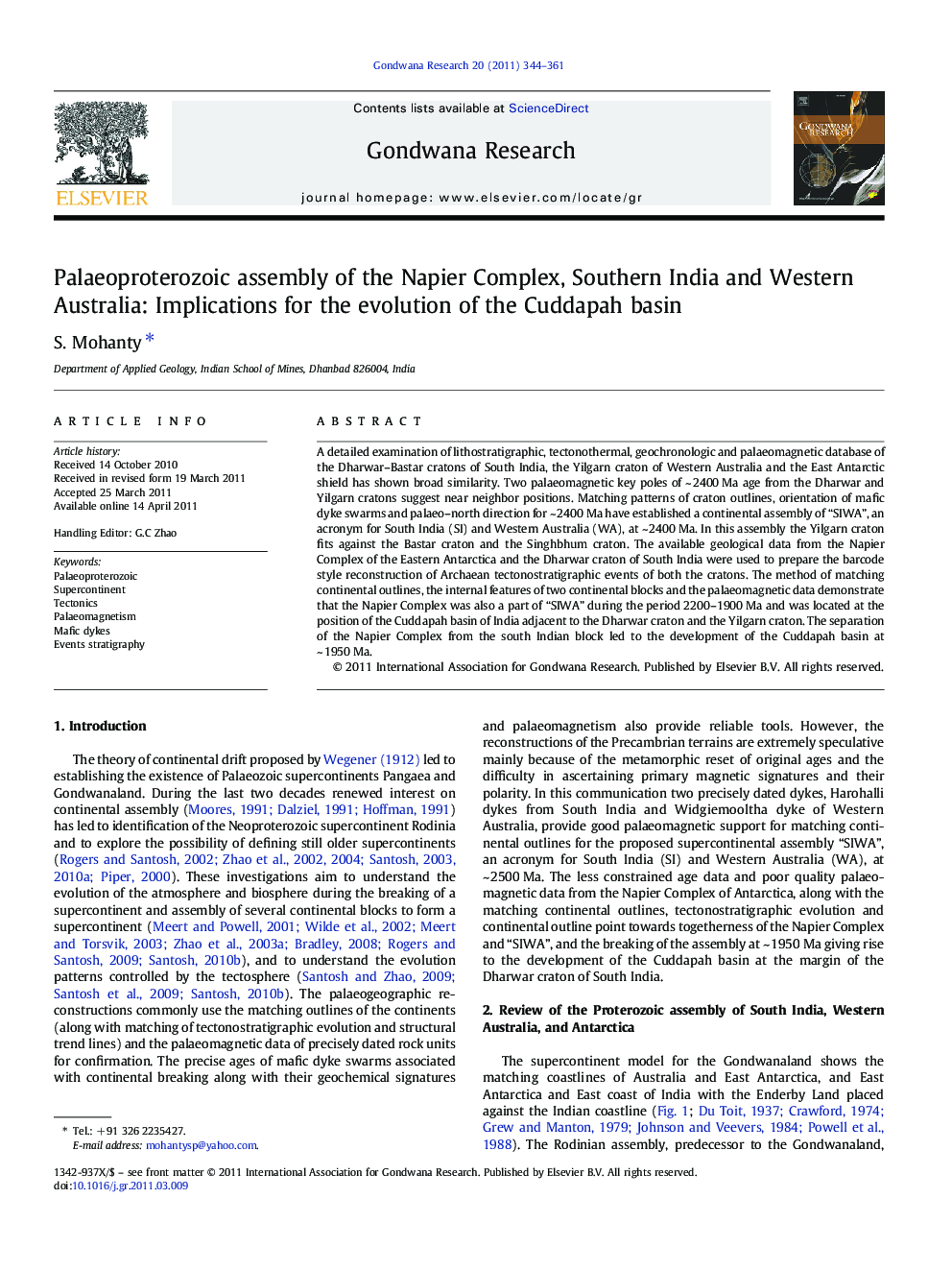| Article ID | Journal | Published Year | Pages | File Type |
|---|---|---|---|---|
| 4727699 | Gondwana Research | 2011 | 18 Pages |
A detailed examination of lithostratigraphic, tectonothermal, geochronologic and palaeomagnetic database of the Dharwar–Bastar cratons of South India, the Yilgarn craton of Western Australia and the East Antarctic shield has shown broad similarity. Two palaeomagnetic key poles of ~ 2400 Ma age from the Dharwar and Yilgarn cratons suggest near neighbor positions. Matching patterns of craton outlines, orientation of mafic dyke swarms and palaeo–north direction for ~ 2400 Ma have established a continental assembly of “SIWA”, an acronym for South India (SI) and Western Australia (WA), at ~ 2400 Ma. In this assembly the Yilgarn craton fits against the Bastar craton and the Singhbhum craton. The available geological data from the Napier Complex of the Eastern Antarctica and the Dharwar craton of South India were used to prepare the barcode style reconstruction of Archaean tectonostratigraphic events of both the cratons. The method of matching continental outlines, the internal features of two continental blocks and the palaeomagnetic data demonstrate that the Napier Complex was also a part of “SIWA” during the period 2200–1900 Ma and was located at the position of the Cuddapah basin of India adjacent to the Dharwar craton and the Yilgarn craton. The separation of the Napier Complex from the south Indian block led to the development of the Cuddapah basin at ~ 1950 Ma.
Graphical abstractFigure optionsDownload full-size imageDownload as PowerPoint slideResearch highlights► Proposed reconstruction of Southern India–Western Australia at ~ 2400 Ma (“SIWA”). ► The Napier Complex of Antarctica was a part of “SIWA” till 1950 Ma. ► The Cuddapah basin formed by separation of the Napier Complex from the Dharwar craton.
